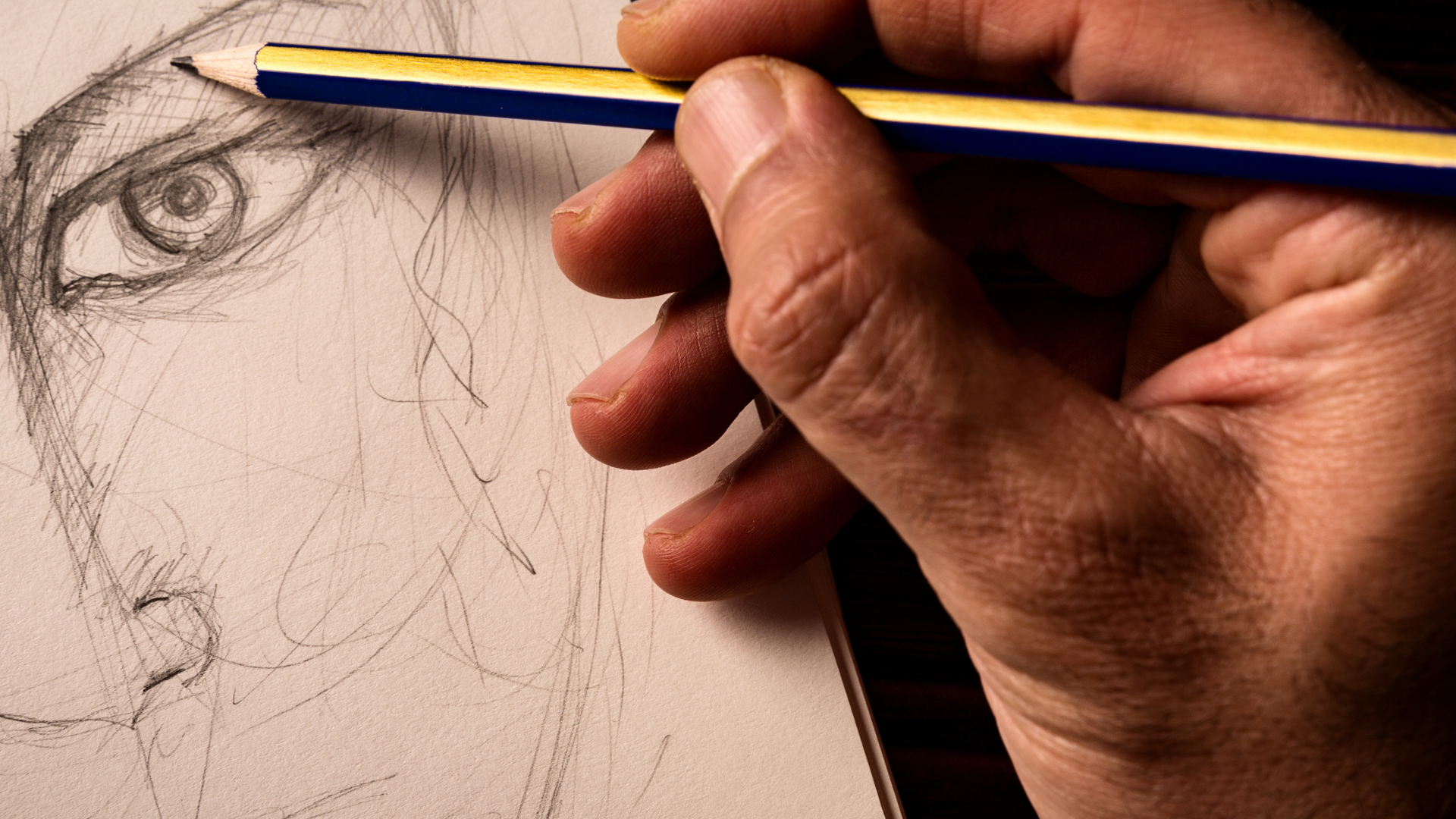A shadow is the dark outline of a figure, object, or scene created when the light strikes its edges. Drawing shadows is a topic that comes up a lot when you learn how to draw portraits. That’s because shadows add depth and dimension to a drawing. They add realism and depth to a portrait. As you learn to draw portraits, you’ll see how shadows help bring life to a drawing.
Drawing shadows on faces is tricky, especially if you’re a beginner, but with the right techniques, it’s not impossible. Draw shadows on faces by learning how to shade around areas you want to appear darker. But no matter what skill level you’re at, this fun exercise is a great way to practice your shading techniques!
Here are Tips to Draw Shadows on Faces:
First, Start with Two Lines, One Vertical and One Horizontal, Intersecting at An Invisible Point.
Like any other drawing, drawing shadows on faces can be broken down into steps. Drawing them on faces can be easier than you might think. Try starting with just two lines that intersect at an invisible point. Start by drawing a vertical line and then drawing a horizontal line, both intersecting at an invisible point. First, draw two vertical lines, one on the left and the other on the right. Then draw one horizontal line, intersecting both vertical lines. The intersecting point should be invisible; your face should just be a square. Next, draw a curved line from the left vertical line to the horizontal line, creating the shadow. Then, to add dimension to your face, draw a curved line from the right line to the intersecting point. Draw another curved line from the first curved line, creating the highlight.
Then, Draw Lines from The Intersection Outward to The Invisible Point.
Drawing shadows may not seem difficult, but it can be a little bit tricky. The trick is to create some lines that intersect at certain points. The lines must all intersect at a single point. After your lines intersect, you’ll have to create shadows between the lines. Draw the shadows of the face outward from the intersection of the eyebrows and the pupil. Then, draw the lines from the intersection of the eyebrows and the pupil out to the invisible point.
Draw These with A Blending Technique, Like Cross-Hatching, To Create the Light and Shadow Effect.
Shadows can add interest plus depth to drawings. Depending on what type of drawing you want to do, drawing shadows can add interest plus depth. Thanks to shading, the shadows cast by objects are clear. The light source isn’t obvious, however. This can create three shadows: the direct reflected light and the dark shadow cast by the object. Drawing shadows on the face can be a great trick. It can create beautiful effects, draw more attention to parts of the face, and add depth to an image. If you want to draw shadows on the face, there are a couple of ways to use blending to draw the light and shadows. To draw shadows on the face, use cross-hatching to blend your shadows. If you’re unsure of cross-hatching, it’s basically a trick where you make a series of different lines and then cross them to make new, lighter lines (or darker). It can be done in any number of ways, but the shading technique below is one example of cross-hatching where the lines were angled in different directions.
Draw More Lines to Create Shadows on The Sides of Faces, too.
Creating shadows on faces is pretty easy. You can do this by drawing lines that alternate between light and dark. Once you’ve drawn these lines, you can shade between the lines to create more shadows. Drawing shadow lines on the sides of faces is a great way to give depth to portraits. And not only can you create a realistic shadow, but you can also add texture and even colour to the shadow. We’re going to draw a very simplified face here since we’re interested in drawing shadows on the side rather than the face. But the same principles apply to drawing faces, too.
Spending time drawing shadows on faces is a great way to practice drawing realistic shadows and to practice rendering skin tones. Shadows and skin tones are a big part of learning how to draw faces, so it’s great practice. It’s also a lot of fun. When drawing shadows, it’s helpful to draw several lines to define the shading. The more layers you draw, the more solid the shadows appear and less like smudges. Drawing shadows on faces can be very challenging. It might come naturally to you, but for those of us who are not naturally gifted at drawing, it can be a real struggle. Mastering the art of drawing shadows takes a little practice.

Leave a Reply